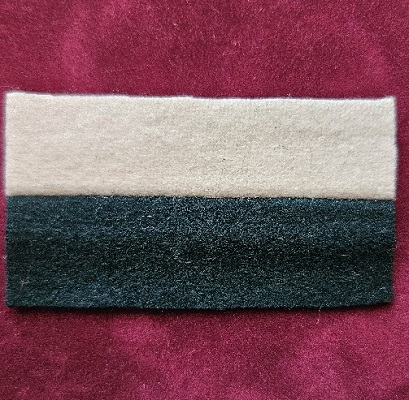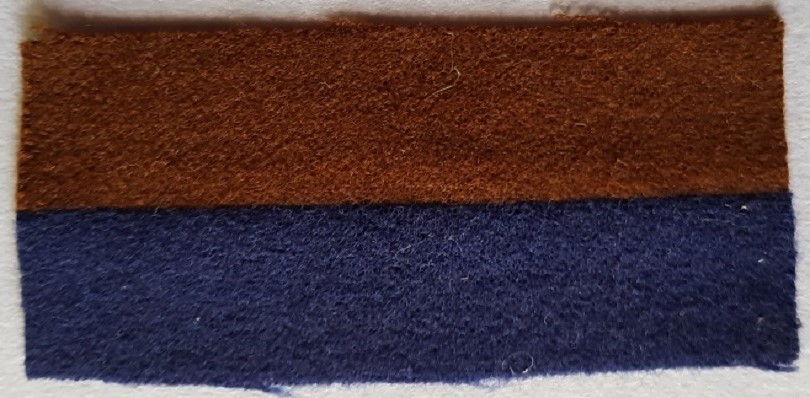Description
Description: Colour Patch – 4th Australian Infantry Battalion 1915 – 1919 or 56th Australian Infantry Battalion 1915 – 1919.
Condition:Near Mint
Comments:Colour Patch – 4th Australian Infantry Battalion 1915 – 1919 or 56th Australian Infantry Battalion 1915 – 1919.
Reference: KG 106 or 188
4th Bn – Raised in Sydney in August 1914 by two magnificent leaders – Onslow Thompson and Charles Macnaghten, THE FIGHTING FOURTH Battalion of the first AIF, went on to land at Gallipoli and then participate in the fearsome struggle at Lone Pine in August 1915, during which time over a third of the 4th Battalion died. It was at Gallipoli, that the 4th Battalion firmly established its reputation as a fighting unit under the leadership of Lieutenant-Colonel Macnaghten, and ably assisted by other officers including Iven Mackay, ‘Cat Iron’ Jimmy Heane, Charles Coltman, Edward Lloyd, Alan Scott, the impressible chaplain ‘Fighting Mack’ Mckenzie and that famous fast bowler from NSW – Jack Massie.
From Gallipoli, the 4th Battalion went to the dreaded Western front in April 1916, and fought in famous battles including Pozieres, Mouquet farm, Bullecourt, Ypres, Chuignes, and on to the Outer Hindenburg Line in September 1918, all places where the unit further added to its impressive list of Battle Honours. Although not winning a single Victoria Cross despite some members being recommended for that award, the 4th Battalion had firmly established a tradition that was taken up and enhanced by the 2/4th and the 4th Battalion AIF during the 39-45 War.
56th Bn –
The 56th Battalion was raised in Egypt on 14 February 1916 as part of the “doubling” of the AIF. Half of its recruits were Gallipoli veterans from the 4th Battalion, and the other half, fresh reinforcements from Australia. Reflecting the composition of the 4th, the 56th was predominantly composed of men from New South Wales. The battalion became part of the 14th Brigade of the 5th Australian Division.
Arriving in France on 30 June 1916, the battalion entered the frontline trenches for the first time on 12 July and fought its first major battle at Fromelles a week later. The battle was a disaster, resulting in heavy casualties across the division. Despite these losses the 5th Division continued to man the front in the Fromelles sector for a further two months.
After a freezing winter manning trenches in the Somme Valley, in early 1917 the 56th Battalion participated in the advance that followed the German retreat to the Hindenburg Line. It was spared the assault but did, however, defend gains made during the second battle of Bullecourt. Later in the year, the AIF’s focus of operations switched to the Ypres sector in Belgium. The 56th’s major battle here was at Polygon Wood on 26 September.
With the collapse of Russia in October 1917, a major German offensive on the Western Front was expected in early 1918. This came in late March and the 5th Division moved to defend the sector around Corbie. The 14th Brigade, took up positions to the north of Villers-Bretonneux and held these even when the village fell, threatening their flanks.
Once the German offensive had been defeated, the Allies launched their own offensive in August 1918. The 14th Brigade did not play a major role in these operations until late in the month, but its actions were critical to the capture of Péronne, which fell on 2 September. The 56th fought its last major battle of the war, St Quentin Canal, between 29 September and 2 October 1918. It was resting out of the line when the Armistice was declared on 11 November. Soon after, members of the battalion began to be returned to Australia for discharge. It ceased to exist as a separate entity on 10 April 1919, when the remnants of all of the 14th Brigade’s battalions were merged into a single unit.







